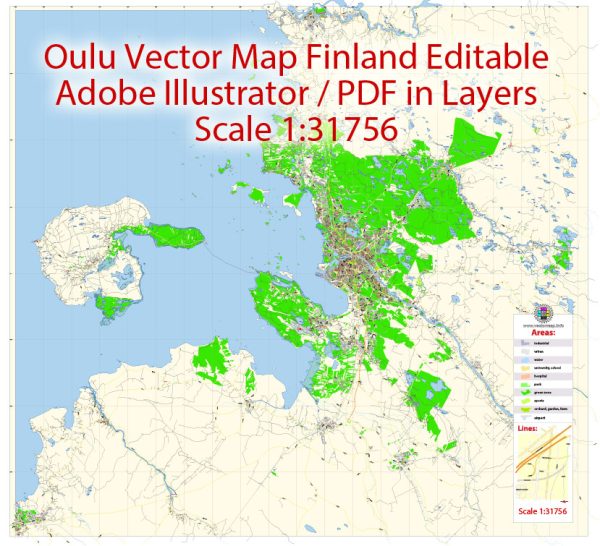Oulu, located in northern Finland, has a rich history of urban development that spans centuries. The city’s growth and evolution have been influenced by factors such as trade, industry, and its strategic location in the Gulf of Bothnia. Here is a brief overview of the history of urban development in Oulu:
- Medieval Origins (late 14th century): Oulu was officially founded in 1605 by King Charles IX of Sweden, but its history dates back to the late 14th century when a trading post was established in the area. The medieval town was largely centered around Oulu Castle, built in 1590, which served both administrative and defensive purposes.
- Trade and Commerce (17th-18th centuries): Oulu’s development was closely tied to trade, especially during the 17th and 18th centuries. The town became a significant trading center, thanks to its location on the Gulf of Bothnia and its access to water routes. Timber, tar, and fur were important commodities, and the town’s wealth grew as trade flourished.
- Industrialization (19th century): The 19th century saw the emergence of industrialization in Oulu. The completion of the first railway line in 1886 connected Oulu to the rest of Finland, facilitating the transportation of goods. Industries such as paper and wood processing became prominent, contributing to the city’s economic development.
- Post-War Reconstruction (20th century): Like many European cities, Oulu faced challenges during World War II. The city was bombed, leading to significant destruction. The post-war period witnessed extensive reconstruction efforts, with a focus on modernizing infrastructure and housing.
- Technological Advancements (Late 20th century): Oulu became known as a center for technological innovation in the late 20th century. The city embraced the technology industry, particularly information technology and telecommunications. The Oulu technology village, Technopolis, was established, further solidifying the city’s reputation as a hub for innovation.
- Contemporary Urban Development (21st century): In recent years, Oulu has continued to evolve as a modern and vibrant city. Urban planning has focused on creating a sustainable and livable environment. The city has invested in cultural amenities, educational institutions, and research centers, contributing to a diverse and dynamic urban landscape.
- Cultural and Educational Hub: Oulu is home to various cultural events, museums, and educational institutions, such as the University of Oulu. These contribute to the city’s identity and attract people from different parts of Finland and beyond.
Throughout its history, Oulu has managed to blend its historical charm with modern development, making it a unique and thriving city in northern Finland. The city’s ability to adapt to changing economic landscapes while preserving its cultural heritage has played a crucial role in its urban development.


 Author: Kirill Shrayber, Ph.D.
Author: Kirill Shrayber, Ph.D.